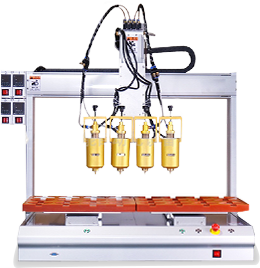

Metal shaft components are the core parts of linear motion and power transmission systems. They are made of high-quality metal materials such as alloy steel, stainless steel, and cemented carbide, and are made through CNC turning, precision grinding, heat treatment, and other processes. The products have high-precision dimensional tolerances, excellent wear resistance, and stable mechanical properties. They can achieve precise linear reciprocating motion or efficient torque transmission, and are widely used in automated production lines, CNC machine tools, industrial robots, and other fields to ensure stable and efficient operation of the equipment.
Provide a variety of types such as optical shaft, spline shaft, trapezoidal screw, etc., with a shaft diameter range of Φ6mm-Φ120mm and a length of 50mm-2000mm. Supports customization of special shaft end structures, thread specifications and surface treatment processes, adapts to linear modules and transmission devices of different brands, and meets the needs of various industrial scenarios. Some common specifications are as follows:
Type | Material | Diameter range (mm) | Length range (mm) | Main application scenarios |
Linear axis | 45# steel | Φ6 - Φ50 | 100 - 1500 | Automation equipment linear motion |
Trapezoidal lead screw | 42CrMo | Φ16 - Φ80 | 200 - 2000 | Machine tool feed transmission system |
Spline shaft | Alloy steel | Φ20 - Φ120 | 300 - 1800 | Industrial robot joint transmission |
4. Strong environmental adaptability
Stainless steel shaft components are passivated and have excellent anti-rust and anti-corrosion capabilities, suitable for harsh environments such as humidity, acid and alkali; the shaft body with chrome plating and hard chrome plating further improves wear resistance and corrosion resistance, and broadens the application range of the product.
III. Product details
1. Material type
Alloy steel: Alloy steels such as 42CrMo and 35CrMo have high strength and high toughness after tempering and quenching, and are suitable for heavy-loaded and high-speed transmission shafts, such as machine tool spindles and industrial robot joint shafts.
Stainless steel: 304 stainless steel has good comprehensive performance and is suitable for general industrial environments; 316L stainless steel adds molybdenum elements and has stronger corrosion resistance. It is often used in food processing, medical equipment and other equipment with strict hygiene requirements.
Hard alloy: Tungsten steel and other hard alloy materials have high hardness and excellent wear resistance. They are suitable for making high-precision and high-load screws and guide shafts, and are used in precision processing equipment.
2. Manufacturing process
CNC machining: Through turning, milling, grinding and other processes, the outer diameter, inner hole, thread, keyway and other structures of the shaft are accurately controlled to ensure dimensional accuracy and surface quality.
Heat treatment: Adopt quenching, tempering, carburizing, nitriding and other processes to improve the hardness, wear resistance and fatigue strength of the material and enhance the comprehensive performance of the shaft.
Surface treatment: Provide chrome plating, nickel plating, blackening, Dacromet and other surface treatment processes to enhance the rust resistance and wear resistance of the shaft and meet different appearance requirements.
3. Quality inspection
Dimension inspection: Use three-coordinate measuring instrument, roundness meter, roughness meter and other precision equipment to fully inspect the key dimensions such as shaft diameter, cylindricity, straightness, surface roughness, etc. to ensure that they meet the design requirements.
Performance inspection: Verify the mechanical properties of the shaft through hardness test, tensile test, fatigue life test, etc.; perform dynamic balance test to ensure the stability of the shaft during high-speed rotation.
Non-destructive testing: Use ultrasonic flaw detection, magnetic particle flaw detection and other technologies to detect whether there are cracks, sand holes and other defects inside the shaft to ensure that the product leaves the factory with zero hidden dangers.
 Headquarters tel.
Headquarters tel. E-mail.
E-mail.